Why the Vertical Mouse Is Better
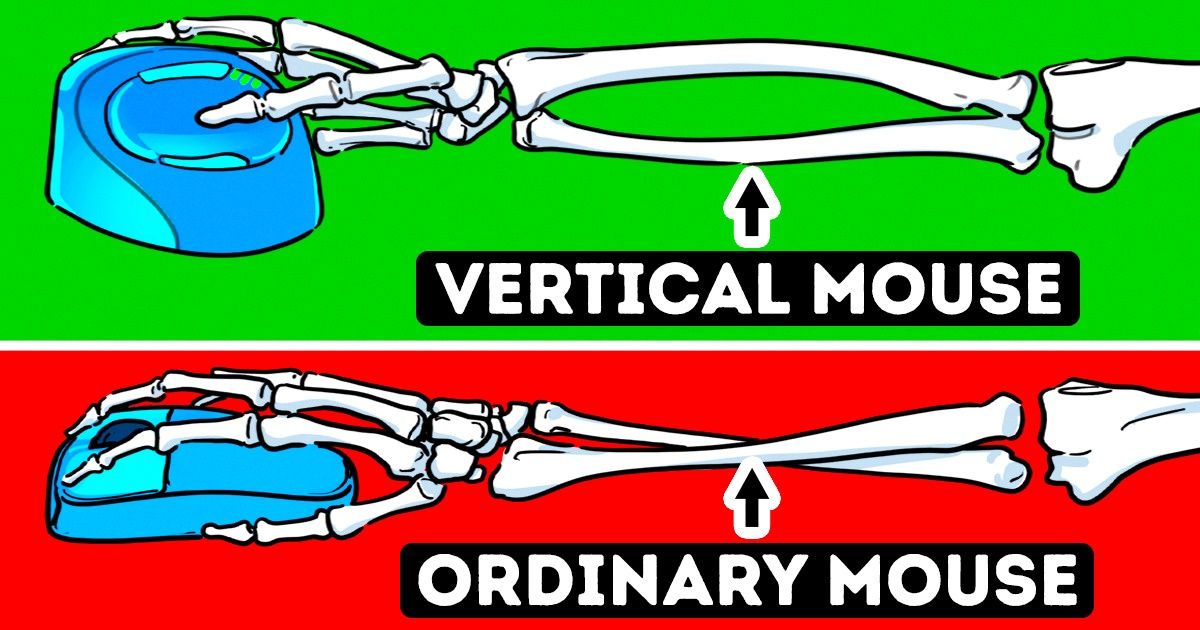
Arranging your workplace in an ergonomic way can help you to have less strain and fewer injuries. Moreover, a proper workstation design can make your work more enjoyable and relaxed. However, one of the most important but often neglected aspects of ergonomics is a computer mouse. Its traditional shape can be a cause for major discomfort.
5-Minute Crafts wants to discuss why it can be better to ditch your old computer mouse and get a vertical one instead. At the end of the article, we also included some tips on how to choose this device and how to use it the proper way.
The benefits of a vertical mouse
1. It prevents you from twisting your wrist.
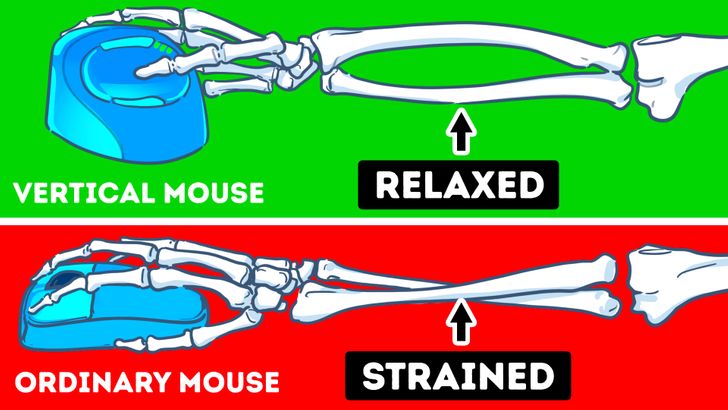
The shape of a traditional computer mouse can overstretch and strain your arm. When you use it, your wrist is twisted in an unnatural position, leading to pain in your carpal tunnel. Conversely, an ergonomic vertical mouse is designed in a way that properly supports your hand. It allows you to place your forearm in an anatomical resting position. Moreover, your wrist remains rested and is kept neutral.
2. It requires less strength to hold it.
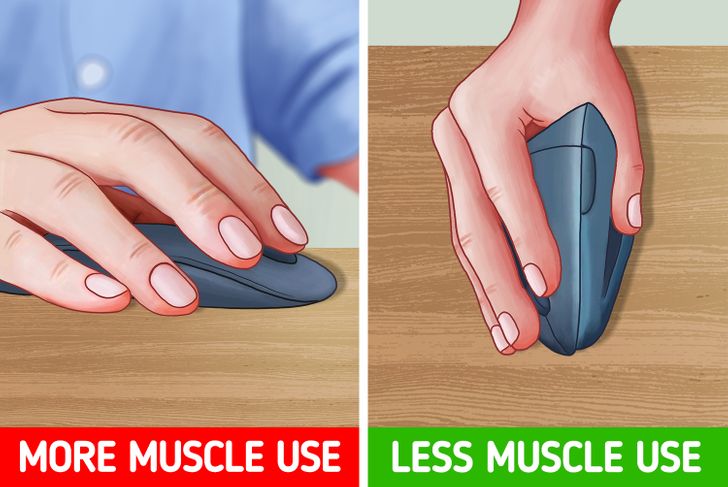
If you use an ordinary mouse too often, you run the risk of developing a mouse arm. Because of this, you can experience pain and fatigue in your hand, arm, and shoulder. Using a vertical mouse can be a good solution, as this device requires less grip strength to hold it. Thus, you minimize muscle use and have less tension in your wrist as you operate it.
3. It can help to alleviate strain injuries.
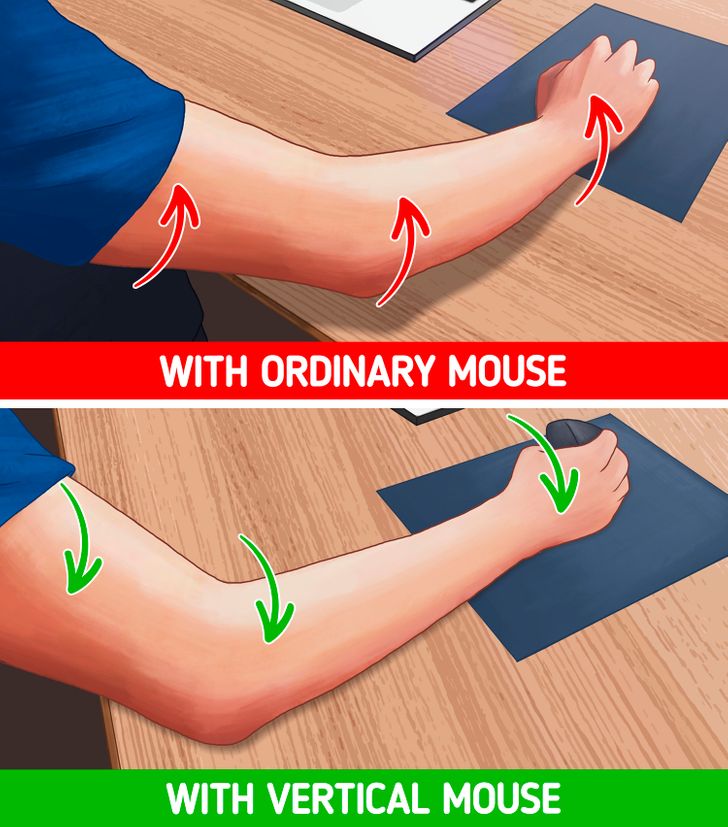
Using a non-ergonomic computer setup, like an uncomfortable mouse and keyboard, for a long time, day after day can lead to repetitive strain injuries (RSI). Common symptoms of this condition include pain, tenderness, stiffness, and cramps in the wrists, hands, forearms, elbows, neck, and shoulders. Those who already suffer from RSI can switch to a vertical mouse, as it helps to relieve those symptoms thanks to its special design.
How to hold a vertical mouse properly
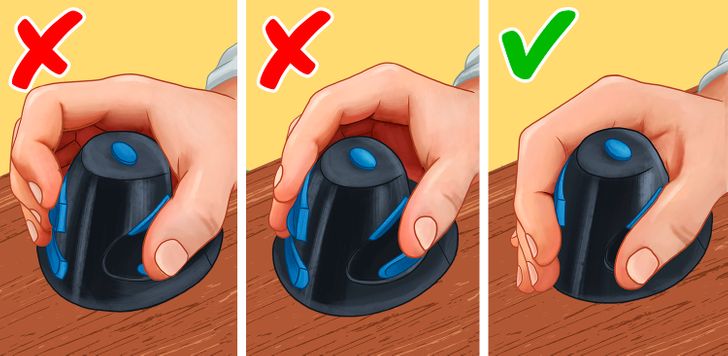
The shape of a vertical mouse should help your arm and wrist to stay in a natural handshake position when you hold it.
❌ Claw grip: Don’t hold a vertical mouse with just the base knuckles of your fingers. This can lead to muscle fatigue and give you pain in your hand and forearm.
❌ Fingertip grip: Don’t hold a vertical mouse using just your fingertips. This gives you the least palm support, can lead to fatigue, and causes pain in your hand and forearm.
✔️ Palm grip: Use your palm and full hand to hold a vertical mouse. Your hands need to be rested on it, the grip should be secure, and the pressure should be applied through your fingers.
How to choose a vertical mouse
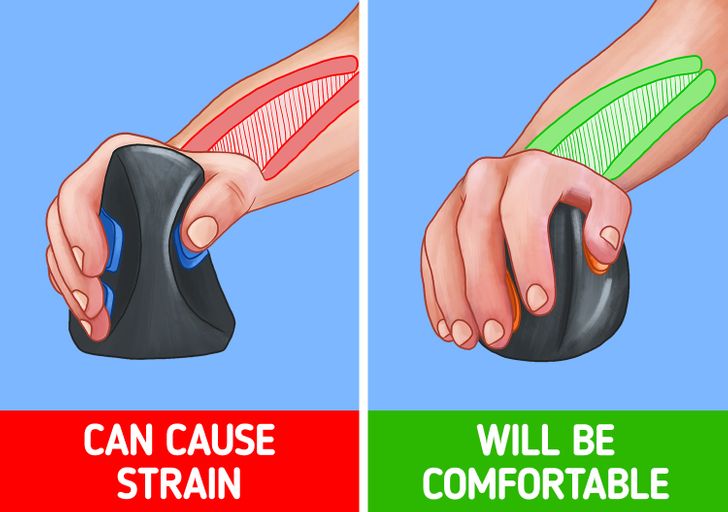
Not every vertical mouse will be suitable for you. Before you get one, make sure you try several of them to choose the best device for your arm.
- Opt for a vertical mouse that allows you to hold your hand and wrist in a neutral position. However, be careful here, as many of these devices put your hand into a sharp vertical position, which is not very beneficial for you.
- Make sure the vertical mouse is not too large. If the device is too big, it will take more effort to move it, and this will increase the strain on your shoulder.
- Choose a wireless vertical mouse if you can. This will let you use it in various positions, the way it’s most comfortable for you.